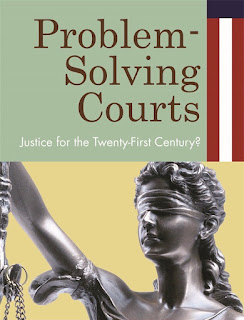Delayed Gratification
Last week, my beloved Arsenal football team won the FA Cup with a resounding 4-0 victory over Aston Villa. The raw joy in the faces of the Arsenal supporters at the game reflected something more than the usual happiness at a favorable sporting outcome. Part of this is contextual: despite being one of the most prominent clubs in the world, up until last year, Arsenal had somehow managed to go nearly a decade without winning a trophy of any significance. The long wait clearly made the triumph just a little bit sweeter.
I have been thinking a lot about the value of patience of late. I am currently working on a number of long-gestating projects, some of which are making steady progress and some of which seem to be going backwards. Learning to delay gratification has been an important part of the maturing process for me as a professional. When I first started working at the Center for Court Innovation, the longest I could imagine a project taking to get off the ground was about a year. One of the most valuable of the many contributions that my old boss John Feinblatt made to my life was talking me down from the (metaphorical) ledge when I wanted to pull the plug on the planning of the Red Hook Community Justice Center back in the mid-1990s when we couldn't seem to attract any money or political attention to the project.
With the benefit of hindsight, I can see that John not only had faith in the merits of the project, but an appreciation that sometimes good things come to those who wait. That certainly was the case in Red Hook, which thanks to a crucial push from both the New York City Mayor's Office and the New York State Court System, finally opened its doors for business in 2000. In fact, we will be celebrating the 15th anniversary of the Justice Center later this year with a cocktail party at the Brooklyn Museum. (See here for more information and to order tickets.)
One of the current projects that we are working on with a significant lead time is a new risk-need screening instrument for criminal courts. With support from the Bureau of Justice Assistance, we are working to pilot the tool in New York City, Chicago and Los Angeles. The basic idea is to help judges, attorneys, and others make more informed decisions about the use of alternatives to detention and incarceration in high-volume criminal justice settings. Our assessment instrument gives decision makers information about the risk levels of defendants -- how likely they are to re-offend. It also provides information about the kinds of needs that individual defendants bring with them to the justice system -- addiction, housing problems, joblessness, etc. Our hope in developing the tool is that justice agencies will use this information to both protect public safety and to increase the use of community-based alternatives to incarceration.
We did a presentation on the risk-need instrument the week before last to a small group of influential criminal justice players here in New York City. At the meeting, researcher Sarah Picard-Fritsche took me by surprise when she said that she has been working on the project for four years. It is no doubt a sign of my advancing years that four years no longer seems like such a very long time -- particularly since we are still probably a year away from the project bearing fruit.
For a little more detail on what we are up to with the criminal court assessment tool, check out this New Thinking podcast with Sarah Picard-Fritsche.


